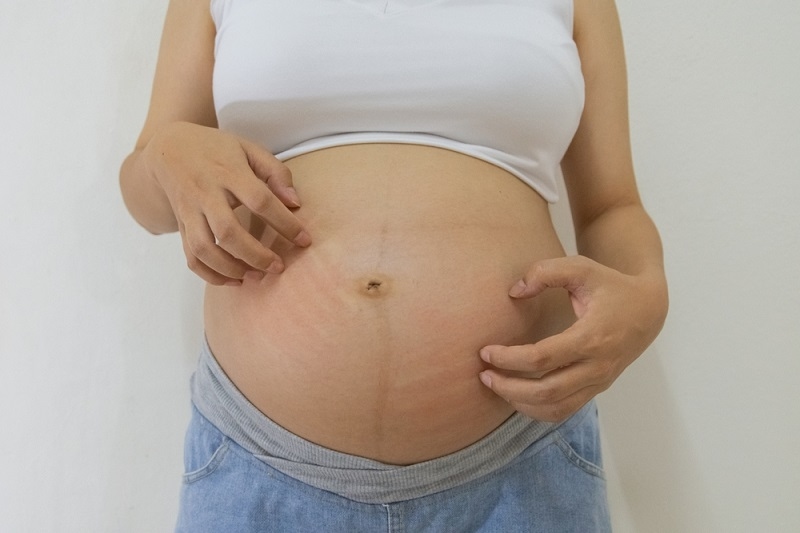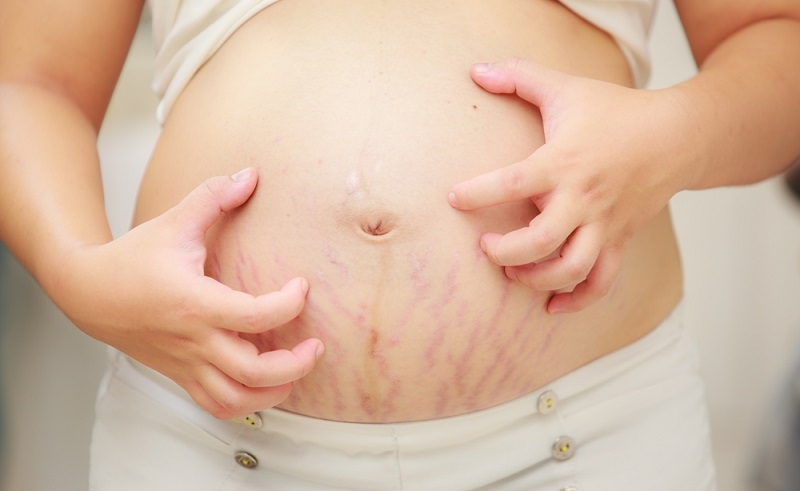Discover Causes, Symptoms, and Treatments for PUPPP Rash

Pregnancy brings beauty and makes life changes, and with it, you can get those unpredictable skin problems. An example of such an issue is the PUPPP rash, or rather, Pruritic Urticarial Papules and Plaques of Pregnancy. This is an itchy skin rash, especially in the third trimester, mostly experienced by women. It is not harmful to babies and the mother, but it is quite uncomfortable and may result in a lot of stress. This blog will discuss all about the causes as well as symptoms of the PUPPP rash and its treatment through simple descriptions.
What is PUPPP Rash?
PUPPP rash is not dangerous but highly irritating and becomes a very itchy rash appearing during pregnancy, mostly in the later periods. It can also be referred to as rash pregnancy or PUPPP, or PUPPP pregnancy rash. It is unpleasant, though it is absent after childbirth, in most cases.
Understanding the Basics of PUPPP Rash
PUPPP rash can begin with small red bumps in the places of stretch marks, especially the stomach. After some time, it has a tendency to spread to other body parts, including the thighs, buttocks, and arms. It is not commonly distributed on the face, the hands, or the feet.
Who Is Most at Risk?
Although pregnant women are likely to develop PUPPP rash, it is usually frequent among new mothers, women who have multiple babies (twins, triplets), and women who experience a swift rise in the abdomen. The rash may also be seen when your skin is stretched beyond the normal level.
What Causes PUPPP Rash?
This part describes what may cause PUPPP rash during pregnancy. Although we cannot be 100 percent sure of the cause, there are a couple of ideas that scholars provide.
Skin Stretching and Hormonal Changes
One of the main reasons experts believe PUPPP rash appears is due to rapid skin stretching. As the belly grows, the skin is pulled, which may trigger an inflammatory response. Hormonal changes may play a role in causing this rash.
Reaction to Fetal Cells
Another theory is that fetal cells move into the mother’s skin. This might cause the immune system to react, leading to the beginning PUPPP rash.
Genetic and Family History
Though not always the case, some studies suggest that PUPPP rash may run in families. If your mother or sister experienced this during pregnancy, you might have a higher chance of getting it too.
Signs and Symptoms of PUPPP Rash

Many women may not recognize PUPPP rash in pregnancy at first. Let’s take a look at the common signs to watch out for.
- Red, Bumpy Rash: The rash usually starts as red bumps or hive-like spots in the stretch mark areas, especially on the abdomen. These bumps may form small patches and often itch intensely.
- Itching and Irritation: The main complaint from pregnant women with PUPPP rash is severe itching. It can interrupt sleep and cause emotional distress. Itching can worsen at night.
- Rash Spreading to Other Areas: In some cases, the rash may move to the legs, arms, and buttocks. However, it usually stays away from the face, palms, and soles of the feet.
When Does PUPPP Rash Start and How Long Does It Last?
Many women wonder about the timing and duration of this pregnancy rash. Let’s break it down.
Typical Onset of PUPPP Rash
PUPPP rash usually appears in the third trimester, around 35 to 39 weeks of pregnancy. Some may even get it postpartum, though that is less common.
Duration and Relief After Delivery
Most women experience relief from PUPPP rash within a few days to weeks after giving birth. In rare cases, it can linger for longer. Once hormone levels normalize and the skin starts to shrink, the rash begins to fade.
Suggested reading: Expert Tips for Treating Common Baby Rash and Their Types
PUPPP Rash Treatment Options
Even though the rash is not harmful, the itchiness can be very annoying. Let’s look at the most effective PUPPP rash treatments that provide relief.
Topical Creams and Lotions
Mild steroid creams, anti-itch lotions, and moisturizers can soothe the skin. Over-the-counter hydrocortisone cream may reduce itching and redness.
Oral Antihistamines
Doctors sometimes recommend oral antihistamines like Benadryl or Claritin to control the itching. These are generally considered safe during pregnancy, but again, always talk to your healthcare provider first.
Oatmeal Baths and Cold Compresses
Soaking in a lukewarm oatmeal bath can calm irritated skin. You can also apply cold compresses or wet cloths to itchy areas for quick relief.
Natural Remedies for PUPPP Rash
If you prefer natural options, there are several gentle remedies that may help ease your discomfort.
Aloe Vera Gel
Aloe vera is known for its cooling and anti-inflammatory properties. Apply pure aloe vera gel on the rash to relieve the itch and calm the skin.
Coconut Oil and Olive Oil
These oils can moisturize the skin and create a protective barrier. They may help reduce the dryness and flakiness associated with PUPPP rash.
Baking Soda Paste
A simple paste made from baking soda and water may help reduce the itch. Apply it to the affected areas and rinse after a few minutes.
Also read: The Best Diaper Rash Creams of 2024: Top Picks for Your Baby
How to Manage Daily Life with PUPPP Rash
Dealing with an itchy rash while being pregnant can feel overwhelming. Here are some tips to make daily life a little easier.
Wear Loose, Breathable Clothing
Tight clothes can irritate your rash. Opt for soft, cotton garments that allow your skin to breathe and reduce friction.
Stay Cool and Avoid Hot Showers
Heat can make itching worse. Take cool or lukewarm showers and keep your room temperature comfortable.
Keep Nails Short
Scratching can damage your skin and cause infection. Keeping your nails short will minimize the risk if you end up scratching during sleep.
When to See a Medical Professional
Even though PUPPP rash is usually harmless, you should always talk to your doctor if you develop a rash during pregnancy. Some other pregnancy-related conditions, like cholestasis or pemphigoid gestationis, can also cause rashes and itching.
You may also like to read: Practical Tips on How to Treat and Prevent Diaper Rash
Can PUPPP Rash Be Prevented?
While there’s no sure way to prevent PUPPP rash, there are a few things that might help reduce your chances or make the symptoms milder.
Keep Skin Moisturized
Using a good-quality moisturizer from the beginning of pregnancy may help your skin stay elastic and less irritated as it stretches.
Healthy Diet and Hydration
Eating a well-balanced diet and staying hydrated can support your skin health and overall well-being during pregnancy.
Final Thoughts
The PUPPP rash happens to be a part of pregnancy, which can be irritating and itchy, particularly at the terminal stages. Still, it does not damage you or your child, but the pain can complicate your daily life. Knowledge of the cause of the PUPPP rash, when to identify it, and how to cure it are the best weapons you can arm yourself with, thus helping you cope with it. Luckily, the rash goes away shortly after birth in most instances. Until that, safe remedies and mild skincare may provide the much-needed relief.
This content was created by AI




